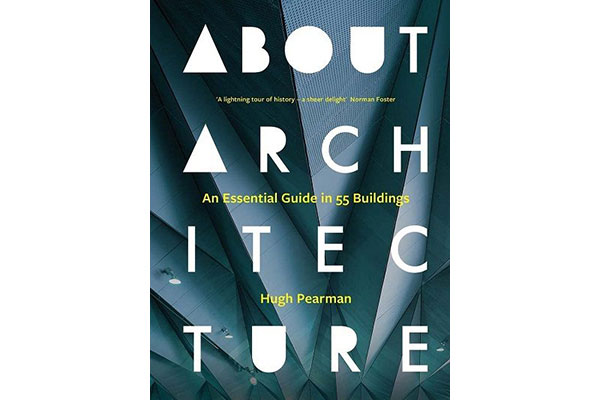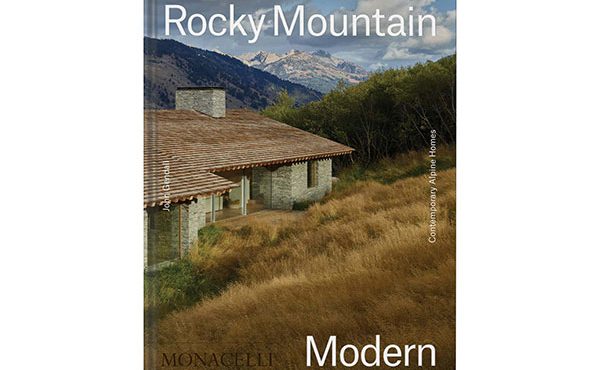
Written by Hugh Pearman, Yale University Press, 2023
“This guide aims for simplicity. There are short introductory essays to each of the 11 building types, followed by a quintet of individual case studies per type, ordered chronologically. Each of the five examples per type is from a different country. The examples are chosen to demonstrate diversity of approach and location, and evolution of a type across time. Overall, the book is structured to be easy to dip in and out of, section by section. and project by project.”
- Author’s Note
Not often in architectural history does one come across a category that combines the Parthenon, Alvar Aalto, and Seaside in Florida, but such is the case with this new book by London-based writer and editor Hugh Pearman. Dispensing with the Vitruvian triad of Firmness, Commodity, and Delight in the book’s opening pages, Pearman proposes a new architectural trinity for our modern world: Society, Technology, and Style. With this as the book’s point of departure, he introduces 11 building types—some new and some old—tailored to provide for our modern age. These include offices, factories, and terminals, and he gives five examples of each to show how they’ve evolved through history.
While several of the usual suspects are here as one might expect—like the already mentioned Parthenon alongside other familiar icons like the Sydney Opera House—there are also many new emerging architects here alongside their work, including that of Diébédo Francis Kéré and Atelier Bow-Wow. Looking through architecture history with this new lens, one is able to see the usual cast of architects in a new light – such as Frank Lloyd Wright’s Johnson Wax Headquarters as an office prototype, or Mies and Lilly Reich’s Tugendhat House as the precursor to all they would do afterwards, from the Barcelona Pavilion to the Farnsworth House.
Many great buildings are here, including the Salk Institute by Louis Kahn, the Sagrada Familia by Gaudi, and Ronchamp by Le Corbusier. Comprised of 11 categories, they include two that are non-architectural (Civic and Gardens) which serve as bookends to the other nine: Houses, Education, Offices, Industry, Transport, Museums, Performance, Religion, and Retail. With five examples of each, starting with an early example (the Acropolis for Civic, Oxford for Education, etc.), more current examples provide an opportunity to showcase work by recent Pritzker winners, including a new university in Lima designed by Yvonne Farrell and Shelley McNamara of Grafton Architects.
During his time as a design critic and editor, Pearman has curated his own personal favourites, including the Vanna Venturi house by Robert Venturi and Gordon Bunshaft’s Beinecke Rare Book Library at Yale, with the CCTV building by OMA and Disney Concert Hall by Frank Gehry perhaps included more as stand-ins for what has not been included in the book (such as the Guggenheim Museum in Bilbao). The book is greatly enriched by the essays at the beginning of each chapter, providing the cultural backbone for each type with the same thoughtfulness Pearman used to write with for the Sunday Times and Architectural Record. This is a history of architecture composed like a great epic poem—with each of the 55 stanzas here providing their own individual insights into what an overall definition of architecture could be.
The non-Western entries included in the book are very much appreciated, including the urban design of Isfahan for Civic and Angkor Wat for Religion. Other building types not typically the subject of architectural anthologies are also here, including a shopping mall in Hong Kong and an Amazon warehouse in Milton Keynes. But it is perhaps the inclusion of the Shenzhen Energy Ring which is one of the book’s most remarkable entries—a waste-to-energy plant that happens to be the world’s largest, also open to the public as an educational facility. When it is fully up and running it will incinerate up to 5,000 tons of waste per day, generating 600 million kWh a year, and having just opened last year it is also one of the book’s most current entries (pun fully intended). Included as a recent example of Industry, the building may not even have shown up in the popular press given it does not fit so neatly into a gallery or museum typology.
Other insights Pearman provide here include his own take on the evolution of the domestic house, citing the often overlooked contributions of Austrian-born architect Margarete Schütte-Lihotzky who designed the first space-saving appliance kitchen in 1926 known as the ‘Frankfurt Kitchen,’ which would effectively reprogram the modern home. In the same section, Pearman mentions the ongoing work of Yasmeen Lari, the first woman to practice architecture in Pakistan. Since 2000 she has devoted her practice to building emergency shelters from readily found materials such as mud, lime, and straw. The book provides for several moments confronting the modern quandary of architecture as a humanitarian challenge, especially as the world’s current supply of housing is not providing for the massive onslaught of immigration.
And with war and catastrophe, public health and the environment, all just hovering on the horizon of About Architecture, Pearman is here suggesting that the palimpsest that is the great book of architecture is constantly being overwritten as society and technology continue to create the need for new building types. With architecture providing the stage for all of this, the 55 examples Pearman provides here will resonate with both the seasoned architect and lay reader alike, providing a ‘lightning tour’ of architectural history as per Sir Norman Foster’s review. And while places like the High Line in NYC and Galleria in Milan will provide for the more popular tastes, entries by Herman Hertzberger and Johann Höger will likewise appeal to the architectural cognoscenti, overall providing a handy reference that will be a delight to return to again and again.
***
For more information on About Architecture, visit the Yale University Press website.
***
Sean Ruthen is a Metro Vancouver-based architect.




